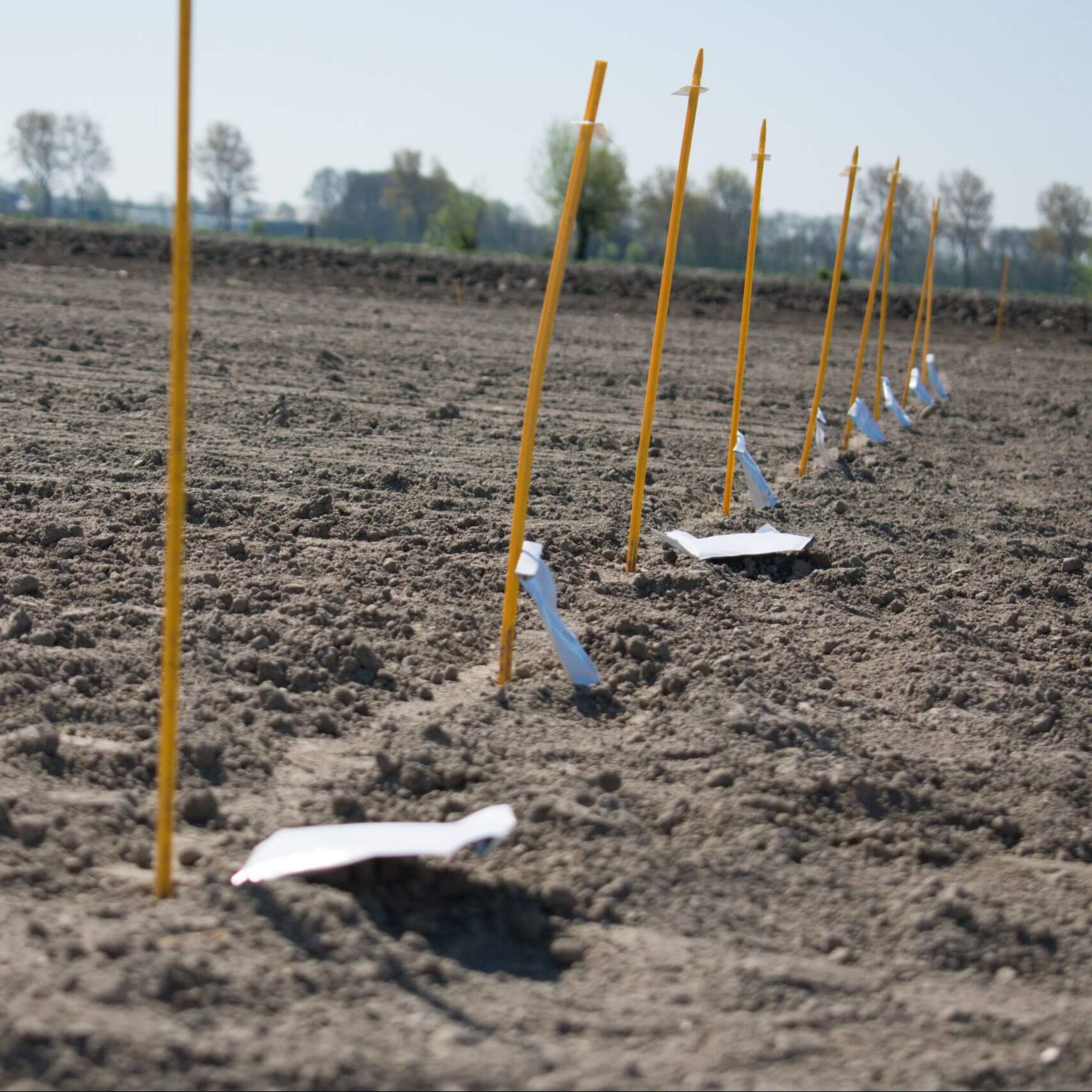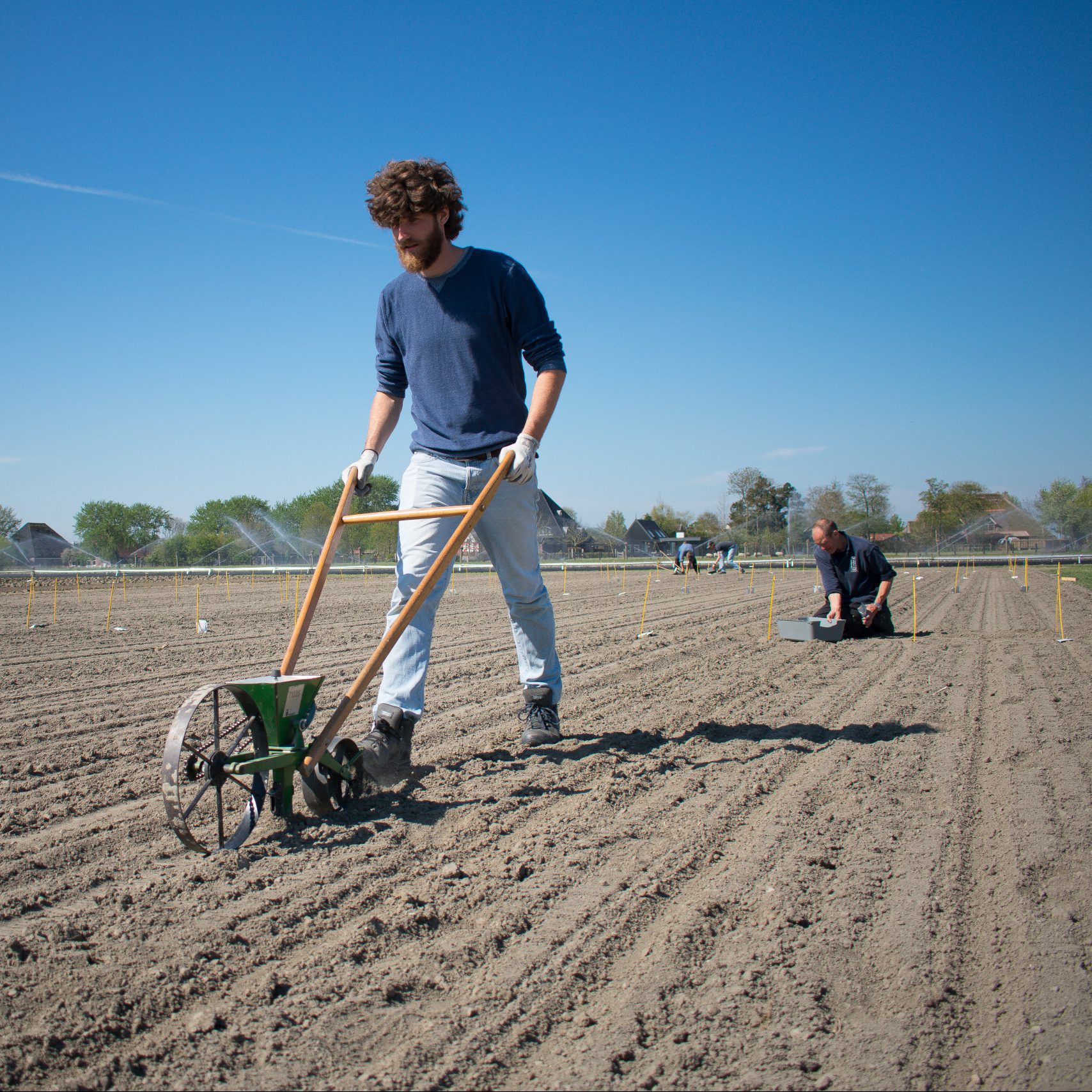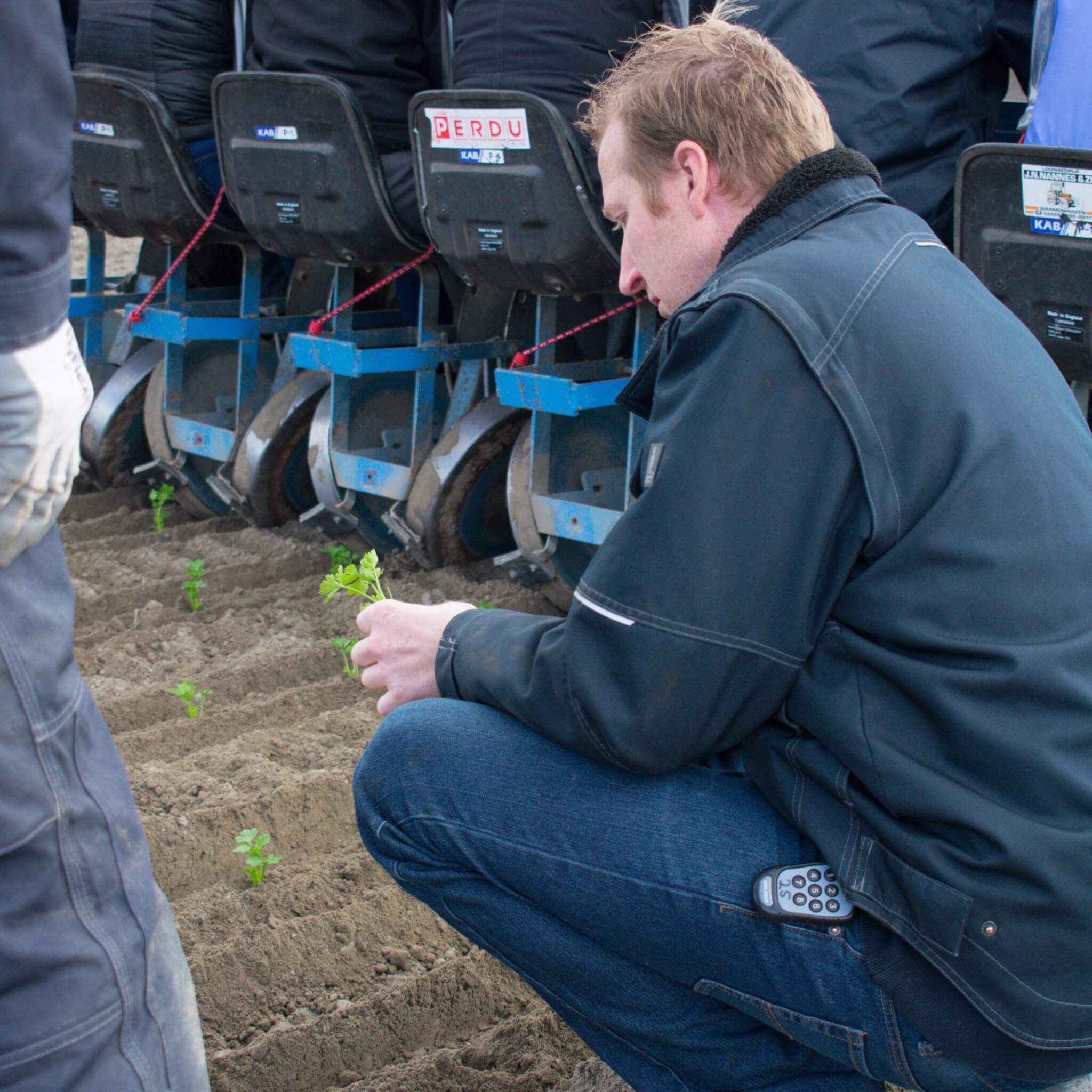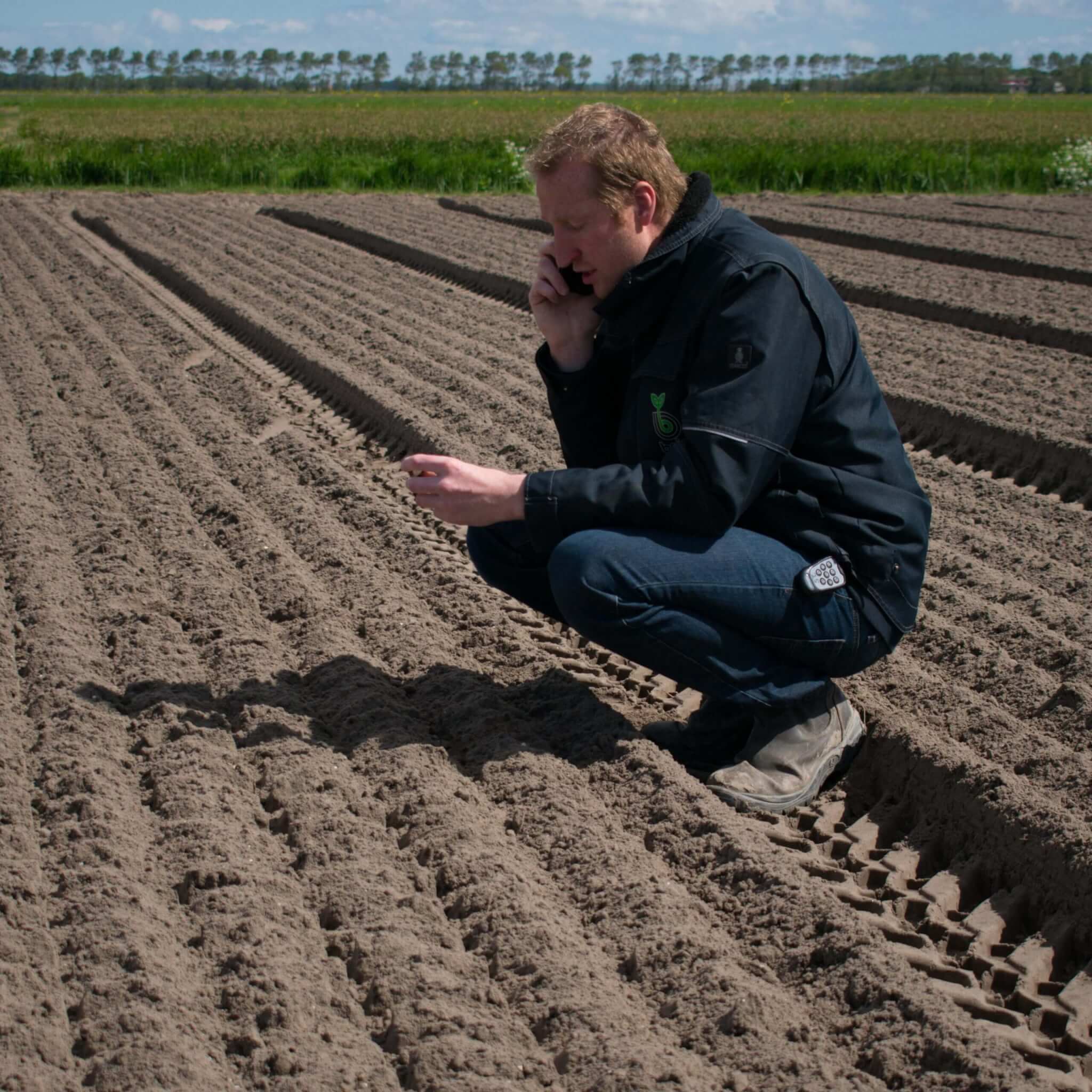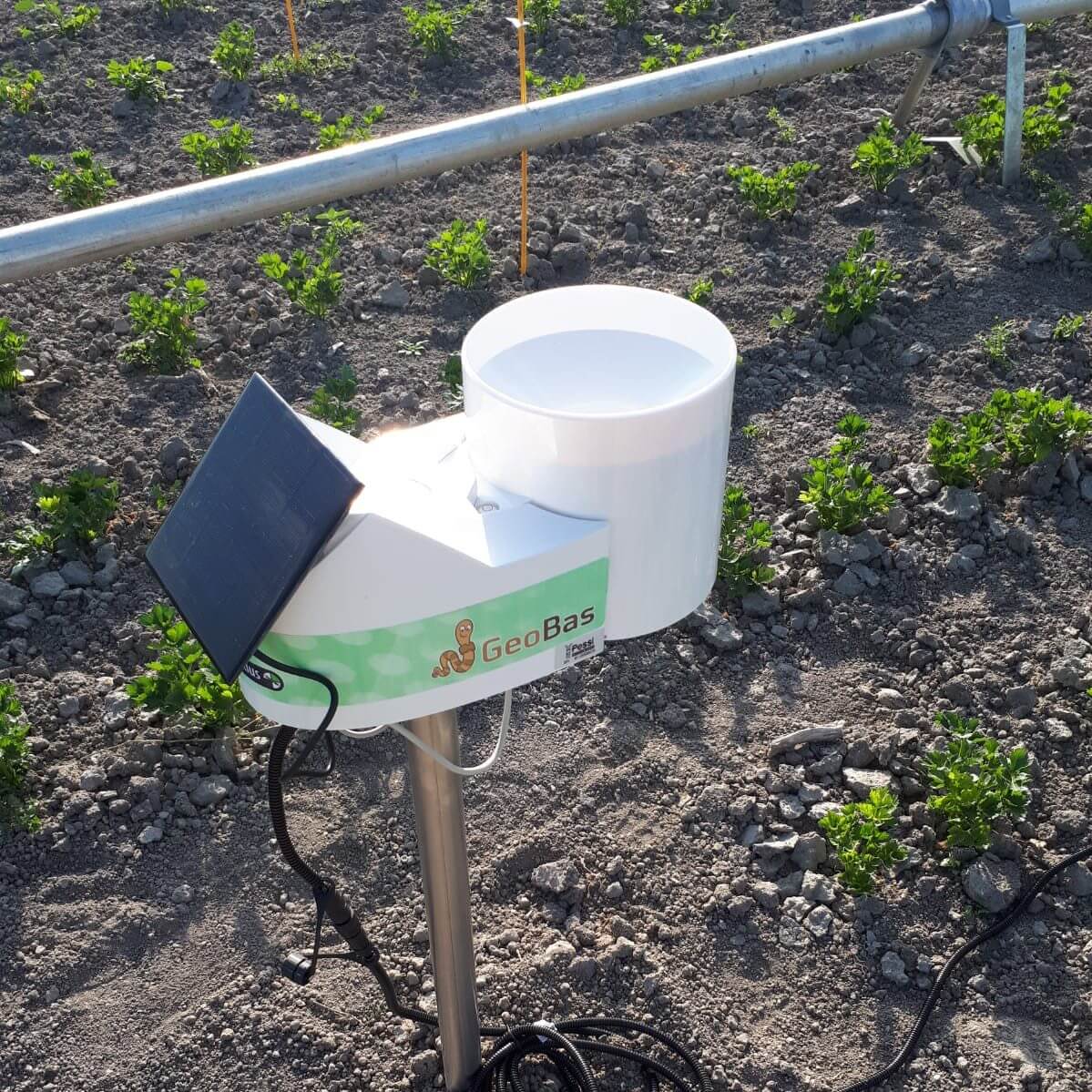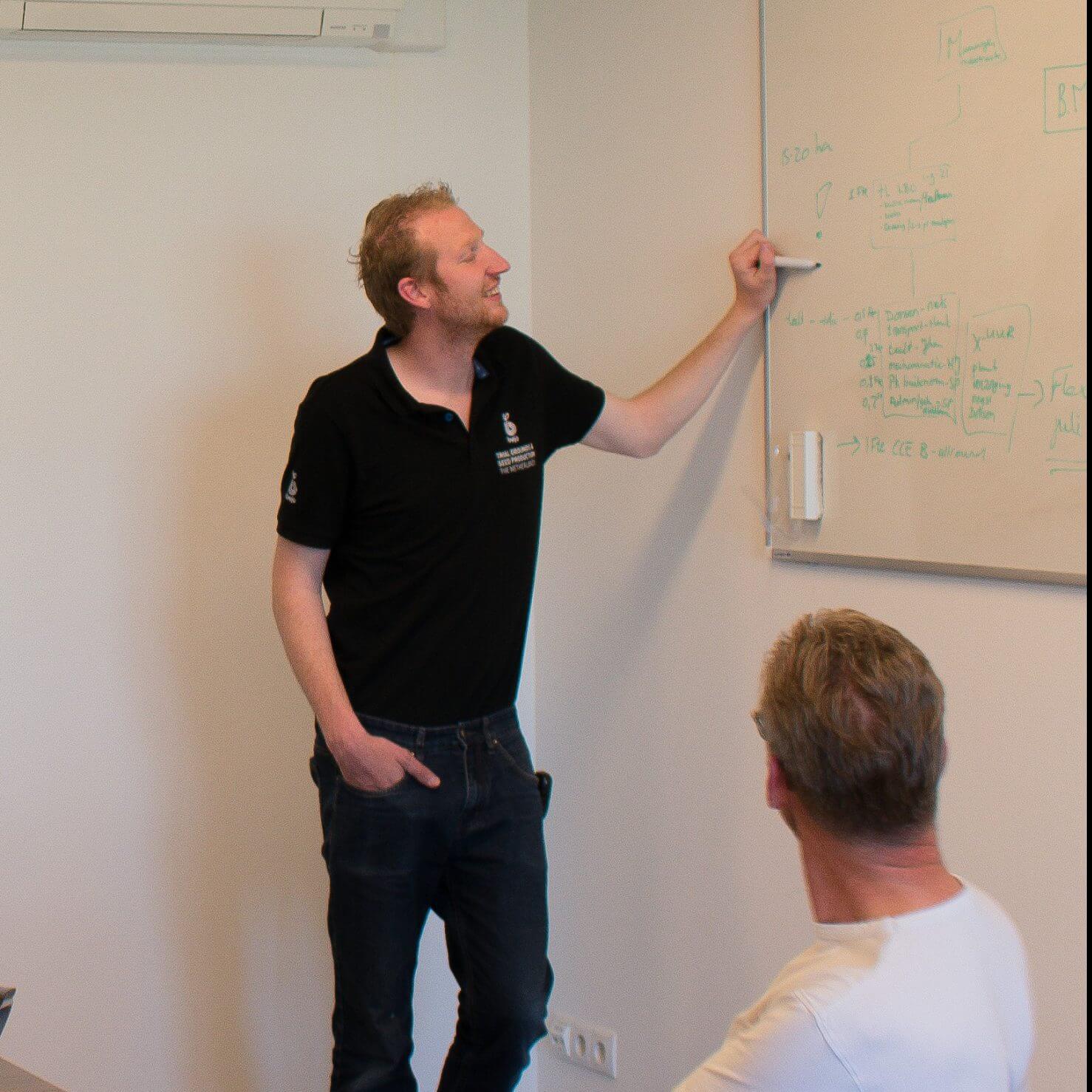In #theweekof, we get to have a look within the workweek of young professionals in Seed Valley.
Björn is the manager of the trial fields at Bejo Nederland. Together with his team, he grows crops on behalf of breeding and research departments. They work on 100 hectares of land (= 100 soccer fields!) and cultivate for more than 475 tests. Nature determines their working rhythm: summer is high season, which is why they sometimes work until 9 pm!

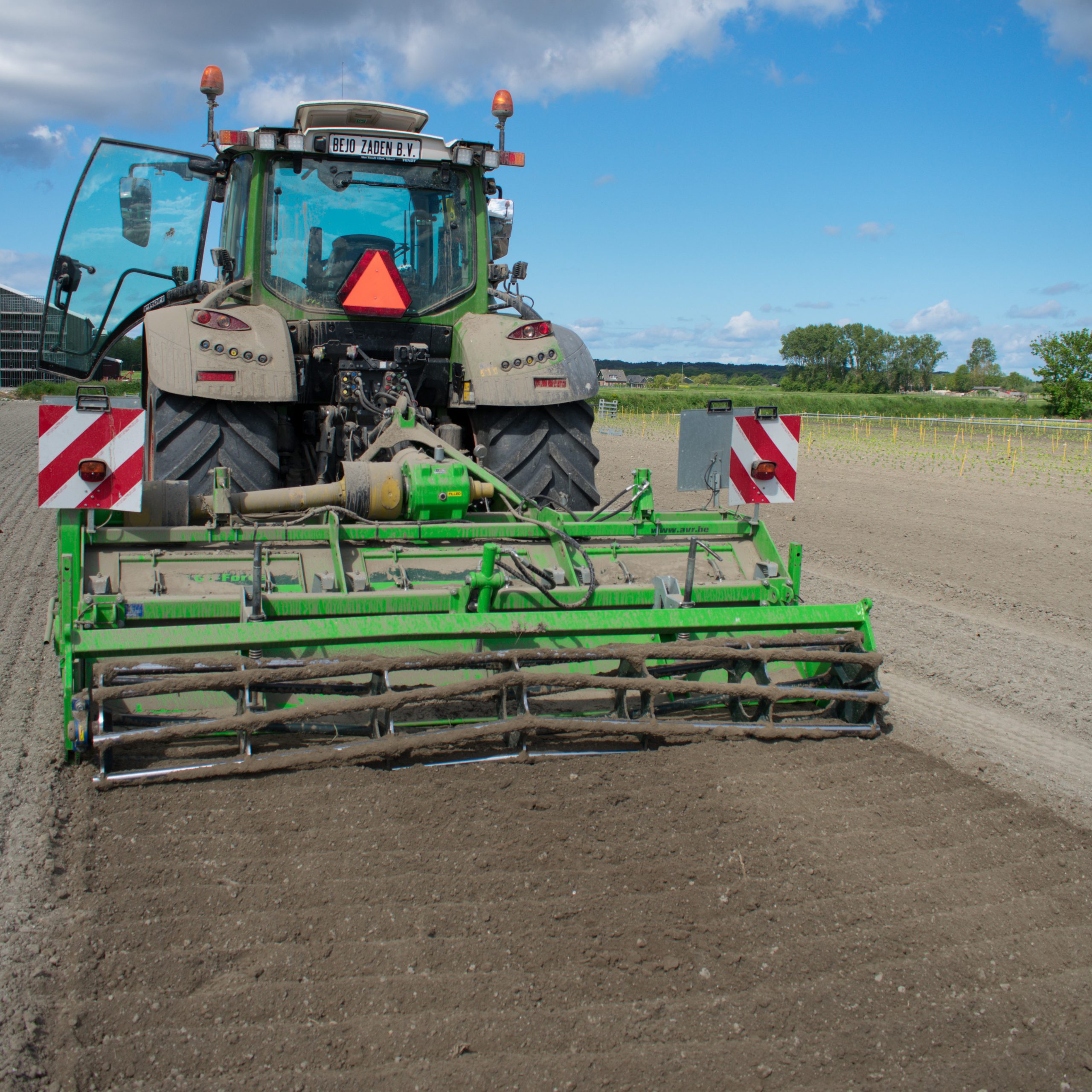

Good morning! My day always starts at 7 pm. Today I start on the trial field: we are going to work the soil for a good seedbed. Our tractor is equipped with a milling machine, which breaks hard clods with rotating knives. This way, the ground is soft, and it’s easy to sow and plant. The tractor drives on GPS, so it drives straight ahead and at the correct working width. Groundwork is a tough job. We do this with the largest tractor in our machine park.

Monday – 11:00 am
Breeding wants us to set up a test for cabbage, so we will work on that. My colleagues are on the planting machine to distribute the plants among the pots. The machine places plants into the ground at the correct depth and distance. The cabbage plants are planted per 10, so the breeder can compare the plants well. We plant approximately 50,000 cabbage plants on 1 hectare (= 1 football field)!

Tuesday – 1:00 pm
Do you see those hills on the land? Carrot seeds are sown in these ridges. The ridges must be high enough because carrots sometimes grow taller than 35 cm. Several carrot varieties are planted, so the employees work very accurately. After an afternoon of sowing, you can find 1 million carrots here.
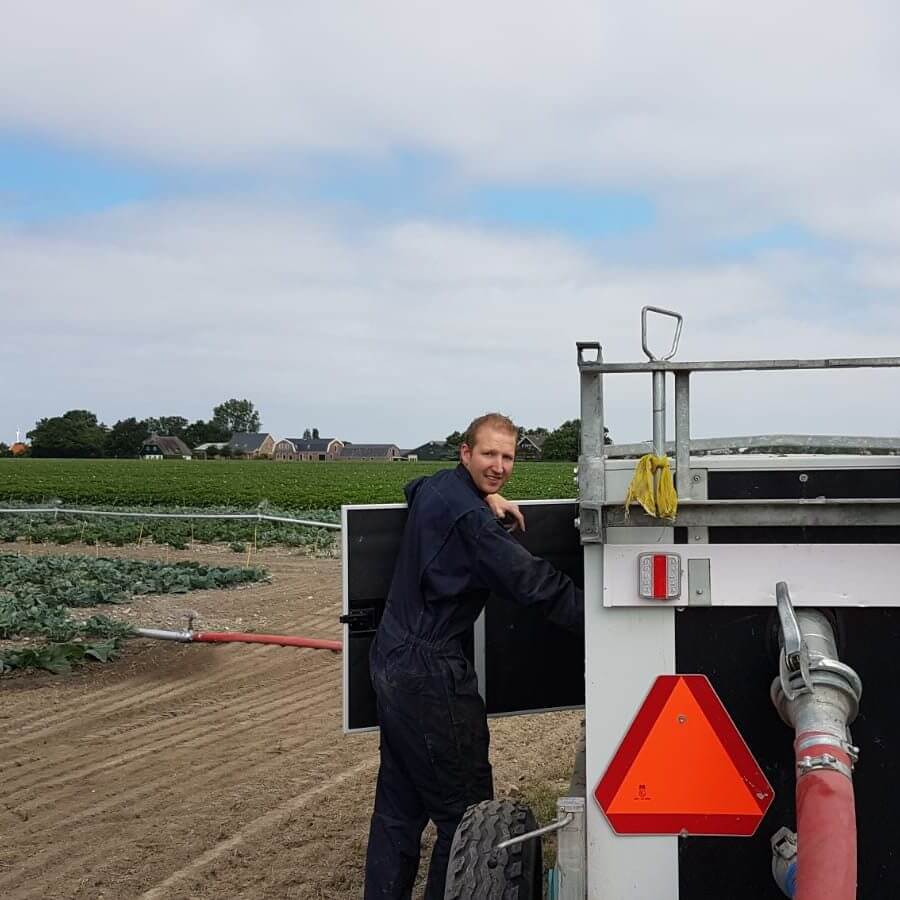
Sometimes we work in the evenings as well. When all plants have been planted, we irrigate them. This will boost their growth. The machine can water two hectares at the time. We do this mostly during the evenings so that less water evaporates through the sun. Smaller trials get water through other sprinklers.
Wednesday – 8:00 am
There is barely any wind today, so we are going to sow beetroot seeds. The seeds usually blow in all directions while working in strong winds. Machines are executing most tasks, but some things still happen by hand. My colleagues and I measured and marked the field in advance. This gives the trial a specific layout, which helps the breeding team during the assessment. Sowing is done with a hand seed drill; 16 colleagues do this at the time.
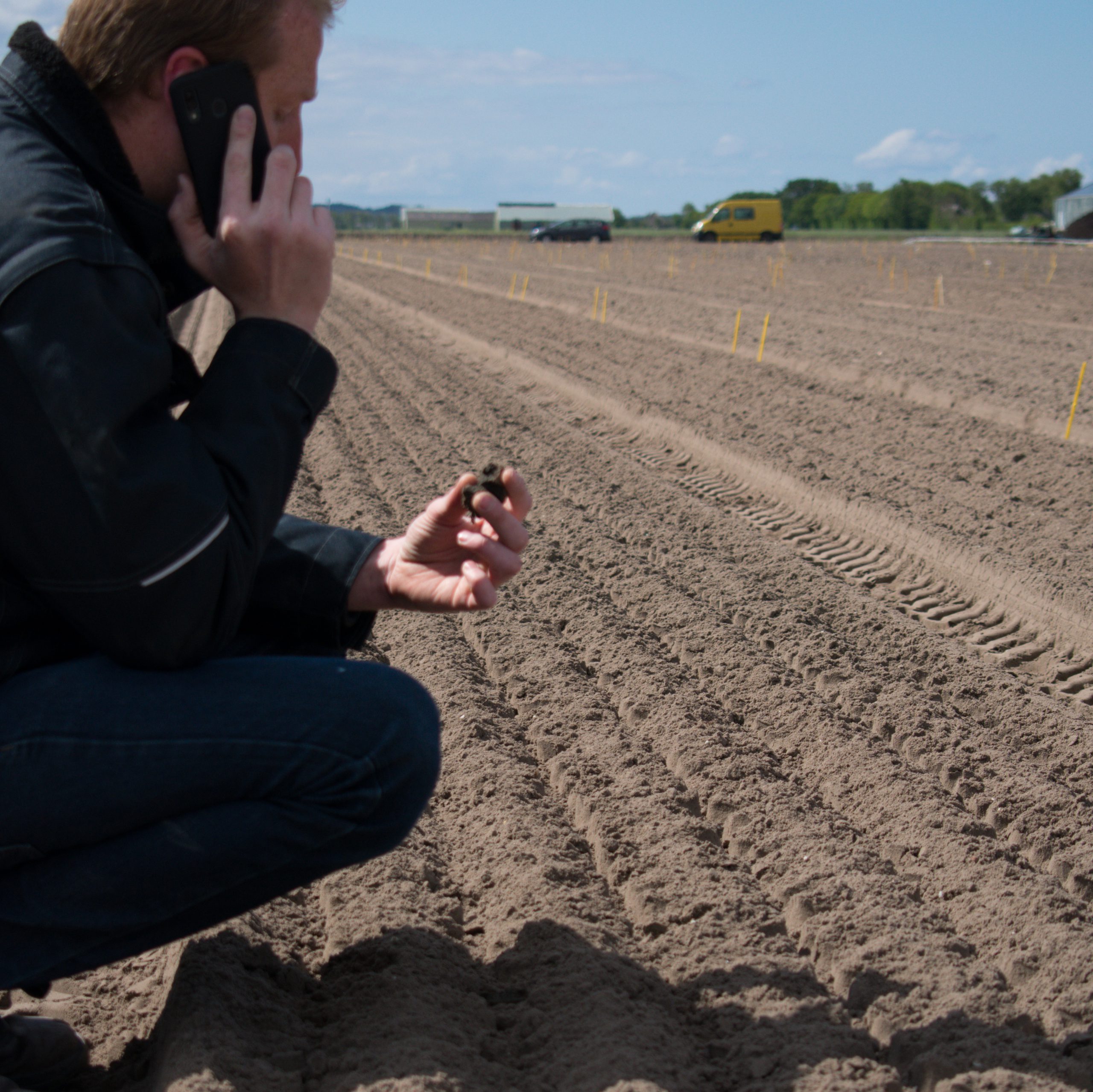
Wednesday – 11:00 am
In the morning, I often catch up with my colleagues to follow up on their tasks. We have planted celery, and, together with the foreman, I check the plants’ quality and the distance between them while discussing work progress. This way, I’m always up to date, and I can still make adjustments where necessary: sometimes with knowledge, sometimes with extra colleagues.
Thursday – 10:00 am
Fertilizer is essential for plant growth. We fertilize the grounds with machines. The tractor is GPS-controlled, and the fertilizer works automated. This way, the amount of manure is distributed evenly, and nothing ends up in ditches or edges.
Thursday – 2:00 pm
Although we have a large team, it’s still impossible to do everything ourselves. We work together with a contractor, so I’m calling him to discuss next week’s work. I also call our supplier about the maintenance and inspection of one of our tractors. The machinery must be up to date. This way there will be no delay in our work.
Friday – 9:00 am
Today I start my day in the office. I’m going to work on next week’s personnel planning. Summer is our prime time for work, so all 35 colleagues are deployed. The youngest in my team is 18, while the oldest is almost 66 years old. The second photo shows our weather station. This showcases how much moisture there is the soil and how fast the plants grow. Based on this data, we know where to irrigate and how much water is needed.
Friday – 1:00 pm
On Monday, we planted and irrigated the cabbages. Today we’ll be hoeing the ground. We remove the weeds with a hoeing machine. This machine is put behind a tractor and removes 5m2 of weeds at a time. Bonus: because we loosen the top layer of the soil, oxygen and water can quickly enter the roots. This gives them plenty of room to grow.
Friday – 4:30 pm
In the fields, we mainly live per week ?, but I am also working on a long-term plan. Together with my colleagues and managers, we regularly consult for strategic personnel planning. We look into how many people and material we’ll be needing in the coming years.
Together we contribute to a healthy and flowering world. We’re constantly facing new challenges, and I work on the solutions. What will you do?
Vacancies and internships







